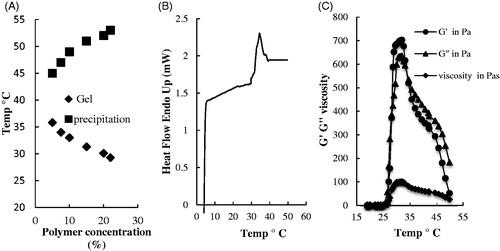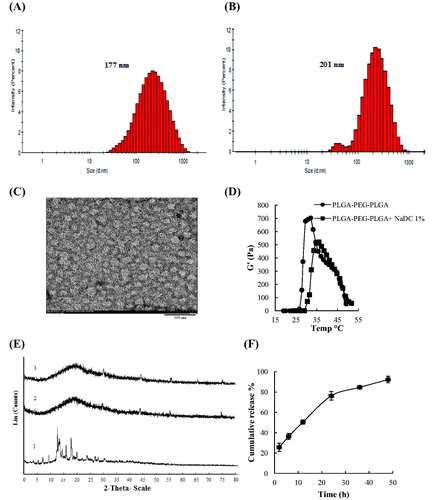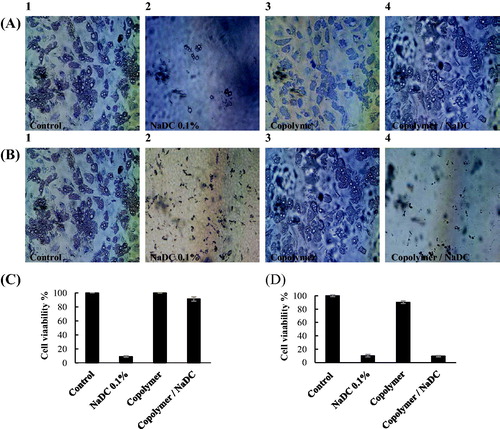Figures & data
Table 1. Results of 1H–NMR and GPC of PLGA–PEG–PLGA.
Figure 1. Termogellability of copolymer aqueous solutions. (A) Phase diagrams of PLGA–PEG–PLGA triblock copolymer in PBS (pH 7.4). (B) The sol–gel transition temperature of PLGA–PEG–PLGA (22% w/v) solution obtained by DSC (C) Storage modulus G′, loss modulus G″ and complex viscosity η´ of PLGA–PEG–PLGA (22% w/v) solution in PBS (pH 7.4) as a function of temperature. Heating rates: 0.5 °C/min, oscillatory frequency: 10 rad/s.

Figure 2. Distribution of hydrodynamic diameter of copolymer micelles in water based on the intensity (A) in the absence of NaDC (Z-average= 177) and (B) the presence of NaDC (Z-average= 201) in a molar ratio of 2:1 copolymer/NaDC by DLS at 25 °C. (C) TEM images of the copolymer–NaDC-mixed micelle at 2: 1 molar ratio of copolymer and NaDC, scale bar 100 nm. (D) Effects of NaDC on storage modulus G′ of PLGA–PEG–PLGA (22% w/v) solution in PBS (pH 7.4) at different temperatures. Drug-loading concentration 1% w/v, heating rates: 0.5 °C/min, oscillatory frequency: 10 rad/s. (E) Powder X-ray diffraction patterns of NaDC, pure PLGA–PEG–PLGA copolymer and the NaDC-loaded copolymer. (1) Pure NaDC, (2) pure polymer, and (3) NaDC-loaded copolymer (1% w/v, 22% w/v). (F) Cumulative release of NaDC from PLGA–PEG–PLGA copolymer in PBS (pH 7.4) at 37 °C. The data are represented as the mean ± SD, n = 3. The polymer concentration was 22% w/v and the drug-loading amount was 1% w/v. The lines are used just for the guides of the eyes.


